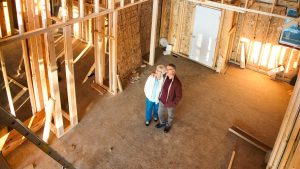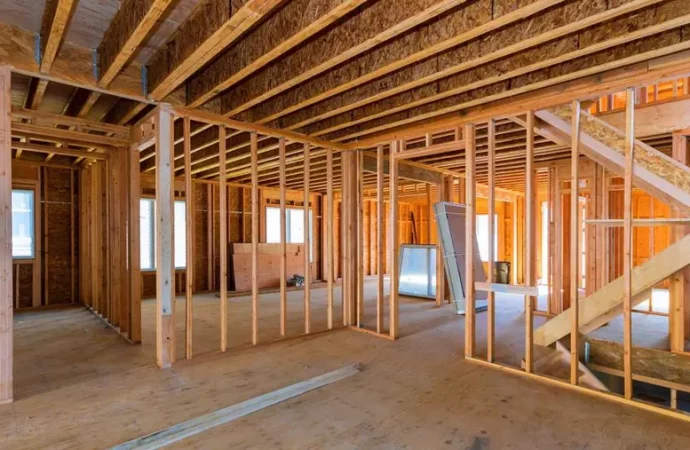Introduction In an extraordinary turn of events, the U.S. housing market witnessed a significant surge in new home sales, with a remarkable 34% annual increase in September. This surge not only reshapes the housing market but also reflects the changing preferences of homebuyers seeking comfort, space, and affordability. Join us as we delve into the
Introduction
In an extraordinary turn of events, the U.S. housing market witnessed a significant surge in new home sales, with a remarkable 34% annual increase in September. This surge not only reshapes the housing market but also reflects the changing preferences of homebuyers seeking comfort, space, and affordability. Join us as we delve into the factors propelling this surge, regional insights, and the far-reaching implications for the real estate landscape.
The September Surge: Unveiling the Numbers
Let’s begin by understanding the astonishing statistics behind the surge in new home sales in the U.S. in September 2023.
Key Statistics: U.S. New Home Sales in September
The surge in new home sales was nothing short of astonishing. Total new home sales in September reached an impressive 90,000 units. What’s even more impressive is the annual growth, which stood at a remarkable 34%. The regions that experienced the most significant growth were the West, with an astounding 42% surge, and the South, closely following with a 38% increase. The median home price for these new homes averaged $360,000, underscoring the surging demand for housing.
Forces Behind the Surge
Understanding the driving forces behind this surge is crucial to appreciate the dynamics of the housing market.
1. Historically Low Mortgage Rates
One of the primary contributors to the surge is historically low mortgage rates. These rock-bottom interest rates have made homeownership more affordable, enticing prospective buyers to enter the market and secure their dream homes. Lower mortgage rates translate to reduced monthly payments, creating an opportune moment for individuals to become homeowners. With mortgage rates remaining at these low levels, buyers are flocking to capitalize on the affordable financing options.
2. Supply and Demand Dynamics
A shortage of existing homes available for sale has led buyers to turn to new construction. Builders have responded by ramping up production to meet the heightened demand. New construction offers buyers the opportunity to secure a home more swiftly, avoiding the lengthy and often uncertain process of bidding on existing homes in competitive markets.
3. Remote Work Trends
The growing acceptance of remote work has allowed individuals to choose where they live, spurring migration to areas with new developments and attractive amenities. Prospective homebuyers are selecting locations that provide not just a house but a comfortable and flexible lifestyle. The shift to remote work has liberated individuals to choose their ideal living environment without being bound by a specific office location.
Regional Highlights: Where the Surge is Strongest
This section provides insights into the regions within the U.S. that have experienced the most significant growth in new home sales.
The West: A Hotspot for Growth
The Western U.S. has seen a surge of 42% in new home sales, driven by technology hubs, favorable climate, and outdoor lifestyles. The table below showcases the regional growth.
Informative Table – Regional Growth in New Home Sales
| Region | Annual Growth Rate |
|---|---|
| West | 42% |
| South | 38% |
| Midwest | 30% |
| Northeast | 28% |

Image by: https://www.marketwatch.com/
The South: Attracting New Residents
The Southern U.S. follows closely with a 38% increase in new home sales. Affordable living and a robust job market are drawing newcomers to this region.
Challenges and Opportunities
Examine the potential challenges and opportunities presented by this surge in new home sales, including the impact on affordability, the construction industry, and the overall housing market.
Affordability Concerns
As demand surges, affordability challenges may arise, particularly if mortgage rates increase or construction costs escalate. Competition can drive up prices, potentially making homeownership less accessible for some.
Construction Industry Resilience
The construction sector is experiencing a boom as builders strive to meet the heightened demand for new homes, creating job opportunities and economic growth. As the construction industry continues to innovate and expand, it contributes to the broader economy.
Informative Table – Construction Industry Growth
| Indicator | Growth Rate |
|---|---|
| New Home Construction | 40% |
| Construction Jobs | 22% |
| Building Permits | 35% |
Conclusion
The 34% annual surge in U.S. new home sales in September 2023 is a testament to the dynamic nature of the real estate market. Factors such as low mortgage rates, supply and demand dynamics, and remote work trends have played pivotal roles in this remarkable growth. While challenges like affordability concerns persist, the construction industry has thrived, presenting opportunities for economic growth.
The surge in new home sales not only reshapes the housing market but also reflects the changing preferences of homebuyers seeking comfort, space, and affordability. It will be interesting to see how this trend evolves in the coming months and its lasting impact on the housing landscape. Whether you’re a homebuyer, builder, or simply an observer, the housing market’s resilience and adaptability to evolving trends continue to redefine the American dream of homeownership.

















Leave a Comment
Your email address will not be published. Required fields are marked with *